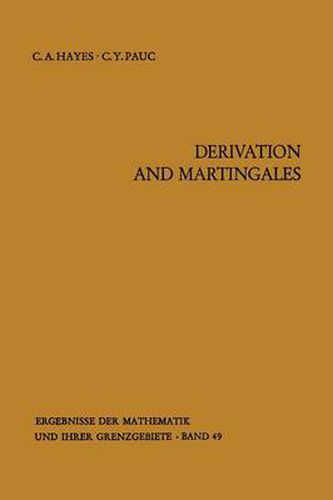Readings Newsletter
Become a Readings Member to make your shopping experience even easier.
Sign in or sign up for free!
You’re not far away from qualifying for FREE standard shipping within Australia
You’ve qualified for FREE standard shipping within Australia
The cart is loading…






This title is printed to order. This book may have been self-published. If so, we cannot guarantee the quality of the content. In the main most books will have gone through the editing process however some may not. We therefore suggest that you be aware of this before ordering this book. If in doubt check either the author or publisher’s details as we are unable to accept any returns unless they are faulty. Please contact us if you have any questions.
In Part I of this report the pointwise derivation of scalar set functions is investigated, first along the lines of R. DE POSSEL (abstract derivation basis) and A. P. MORSE (blankets); later certain concrete situations (e. g. , the interval basis) are studied. The principal tool is a Vitali property, whose precise form depends on the derivation property studied. The halo (defined at the beginning of Part I, Ch. IV) properties can serve to establish a Vitali property, or sometimes produce directly a derivation property. The main results established are the theorem of JESSEN-MARCINKIEWICZ-ZYGMUND (Part I, Ch. V) and the theorem of A. P. MORSE on the universal derivability of star blankets (Ch. VI) . . In Part II, points are at first discarded; the setting is somatic. It opens by treating an increasing stochastic basis with directed index sets (Th. I. 3) on which premartingales, semimartingales and martingales are defined. Convergence theorems, due largely to K. KRICKEBERG, are obtained using various types of convergence: stochastic, in the mean, in Lp-spaces, in ORLICZ spaces, and according to the order relation. We may mention in particular Th. II. 4. 7 on the stochastic convergence of a submartingale of bounded variation. To each theorem for martingales and semi-martingales there corresponds a theorem in the atomic case in the theory of cell (abstract interval) functions. The derivates concerned are global. Finally, in Ch.
$9.00 standard shipping within Australia
FREE standard shipping within Australia for orders over $100.00
Express & International shipping calculated at checkout
This title is printed to order. This book may have been self-published. If so, we cannot guarantee the quality of the content. In the main most books will have gone through the editing process however some may not. We therefore suggest that you be aware of this before ordering this book. If in doubt check either the author or publisher’s details as we are unable to accept any returns unless they are faulty. Please contact us if you have any questions.
In Part I of this report the pointwise derivation of scalar set functions is investigated, first along the lines of R. DE POSSEL (abstract derivation basis) and A. P. MORSE (blankets); later certain concrete situations (e. g. , the interval basis) are studied. The principal tool is a Vitali property, whose precise form depends on the derivation property studied. The halo (defined at the beginning of Part I, Ch. IV) properties can serve to establish a Vitali property, or sometimes produce directly a derivation property. The main results established are the theorem of JESSEN-MARCINKIEWICZ-ZYGMUND (Part I, Ch. V) and the theorem of A. P. MORSE on the universal derivability of star blankets (Ch. VI) . . In Part II, points are at first discarded; the setting is somatic. It opens by treating an increasing stochastic basis with directed index sets (Th. I. 3) on which premartingales, semimartingales and martingales are defined. Convergence theorems, due largely to K. KRICKEBERG, are obtained using various types of convergence: stochastic, in the mean, in Lp-spaces, in ORLICZ spaces, and according to the order relation. We may mention in particular Th. II. 4. 7 on the stochastic convergence of a submartingale of bounded variation. To each theorem for martingales and semi-martingales there corresponds a theorem in the atomic case in the theory of cell (abstract interval) functions. The derivates concerned are global. Finally, in Ch.